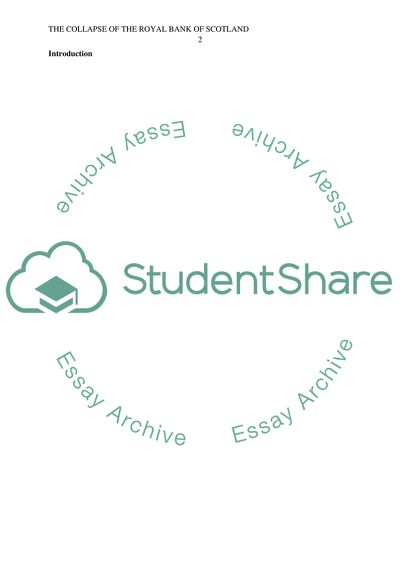Cite this document
(TOPIC : THE COLLAPSE OF THE ROYAL BANK OF SCOTLAND, Critically Essay, n.d.)
TOPIC : THE COLLAPSE OF THE ROYAL BANK OF SCOTLAND, Critically Essay. https://studentshare.org/finance-accounting/1853218-topic-the-collapse-of-the-royal-bank-of-scotland-critically-evaluate-the-reasons-for-the-failure-of-the-royal-bank-of-scotland-in-2008-and-outline-the-consequences-of-this-failure-and-that-of-other-uk-banks-in-the-same-period
TOPIC : THE COLLAPSE OF THE ROYAL BANK OF SCOTLAND, Critically Essay. https://studentshare.org/finance-accounting/1853218-topic-the-collapse-of-the-royal-bank-of-scotland-critically-evaluate-the-reasons-for-the-failure-of-the-royal-bank-of-scotland-in-2008-and-outline-the-consequences-of-this-failure-and-that-of-other-uk-banks-in-the-same-period
(TOPIC : THE COLLAPSE OF THE ROYAL BANK OF SCOTLAND, Critically Essay)
TOPIC : THE COLLAPSE OF THE ROYAL BANK OF SCOTLAND, Critically Essay. https://studentshare.org/finance-accounting/1853218-topic-the-collapse-of-the-royal-bank-of-scotland-critically-evaluate-the-reasons-for-the-failure-of-the-royal-bank-of-scotland-in-2008-and-outline-the-consequences-of-this-failure-and-that-of-other-uk-banks-in-the-same-period.
TOPIC : THE COLLAPSE OF THE ROYAL BANK OF SCOTLAND, Critically Essay. https://studentshare.org/finance-accounting/1853218-topic-the-collapse-of-the-royal-bank-of-scotland-critically-evaluate-the-reasons-for-the-failure-of-the-royal-bank-of-scotland-in-2008-and-outline-the-consequences-of-this-failure-and-that-of-other-uk-banks-in-the-same-period.
“TOPIC : THE COLLAPSE OF THE ROYAL BANK OF SCOTLAND, Critically Essay”. https://studentshare.org/finance-accounting/1853218-topic-the-collapse-of-the-royal-bank-of-scotland-critically-evaluate-the-reasons-for-the-failure-of-the-royal-bank-of-scotland-in-2008-and-outline-the-consequences-of-this-failure-and-that-of-other-uk-banks-in-the-same-period.


